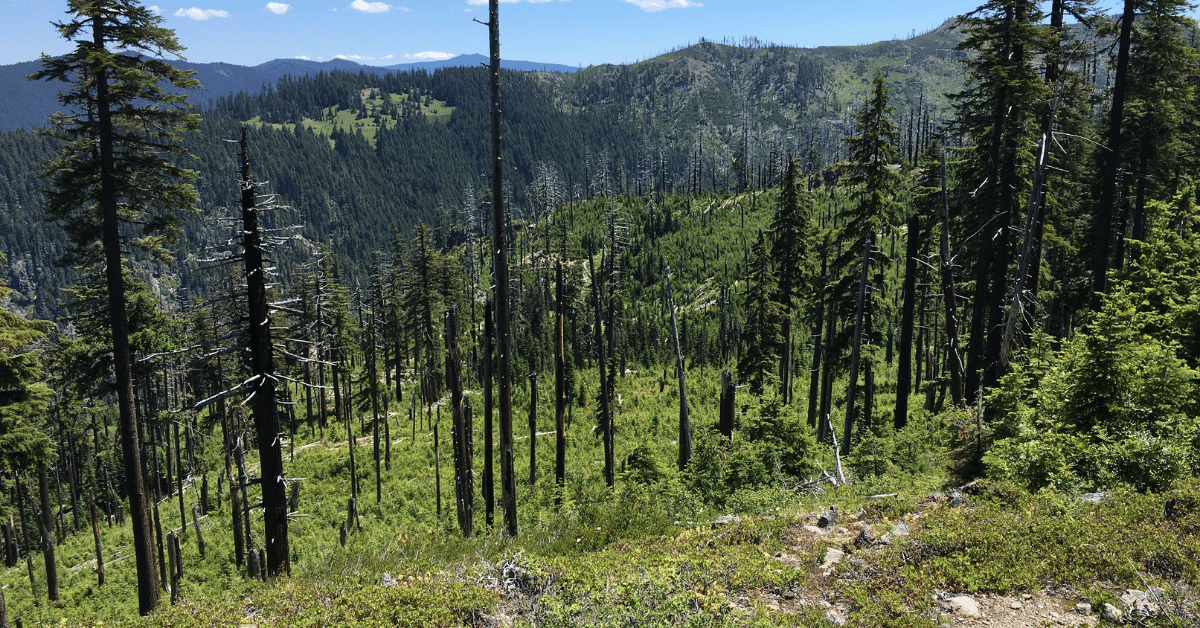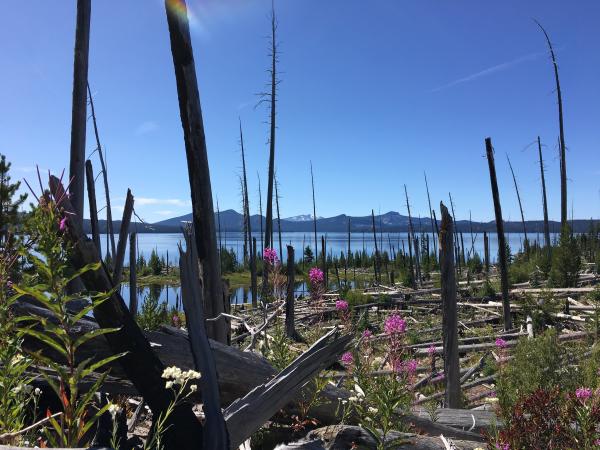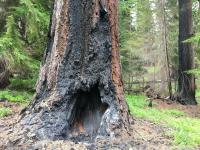
Not long after moving to Eugene for graduate school, I took a field trip to the Warner Creek fire area outside of Oakridge. At that time it was 10 years since the 1991 fire. I remember the tall black snags rising tall above, and sapling trees crowded all around me -- head high and coated in dew that soaked through my sub-par rain gear. I’ve revisited the area a few times in recent years (now nearly 30 years post-fire, as pictured above) and the hike along Bunchgrass Ridge through the burned area is one of the most exciting I know: Beargrass flowers thrive in the openings, butterflies and native bees enjoy the diversity of wildflowers, young trees are growing tall, and snags and down logs from the fire are still intact - storing water and carbon and providing a source of nutrients to the forest floor. But for the efforts of activists who physically and legally held the Forest Service and loggers at bay, this burned area would have been clearcut (a common practice after fires) - setting the soil, vegetation, and wildlife habitat back a decade and removing essential components of the thriving forest landscape that exists today.
As we’ve all seen in recent years, fire does kill trees—sometimes just a few and sometimes vast landscapes depending on the severity and intensity of the fire— but it also has a rejuvenating effect on forests. The trees that die in a fire are recycled naturally as snags and down logs, stabilizing and enriching the soil and providing much-needed habitat for species like woodpeckers, bluebirds, and bats that depend on abundant dead trees. Fires reset the understory where it may have grown very dense, allowing different species to thrive in burned patches. After decades of forest managers working to aggressively put fires out wherever they occur and interfering with natural recovery processes through post-fire logging, naturally recovering postfire forests are now rare.
 These forests are also some of the most interesting and beautiful to visit. Believe it or not, ALL of the forested trails, campgrounds, and riversides you know and love have burned at one time or another in the past. Some trails have overt signs of fire, like on Bunchgrass Ridge, near Chuckle Springs on the Middle Fork Willamette River Trail, or on the north side of Waldo Lake (pictured above). On others, signs are much more subtle. For example, along the popular Brice and Goodman Creek trails not far from Eugene, you might encounter massive 5-foot diameter living Douglas-fir trees that have one side blackened to 20 feet off the ground - remnants from a past fire these fire-adapted trees survived.
These forests are also some of the most interesting and beautiful to visit. Believe it or not, ALL of the forested trails, campgrounds, and riversides you know and love have burned at one time or another in the past. Some trails have overt signs of fire, like on Bunchgrass Ridge, near Chuckle Springs on the Middle Fork Willamette River Trail, or on the north side of Waldo Lake (pictured above). On others, signs are much more subtle. For example, along the popular Brice and Goodman Creek trails not far from Eugene, you might encounter massive 5-foot diameter living Douglas-fir trees that have one side blackened to 20 feet off the ground - remnants from a past fire these fire-adapted trees survived.
These signs and patterns stem from a variety of natural fires that historically burned in the moist western Oregon Cascades and Coast Range, often recurring at long intervals of a few hundred years when weather conditions were just right, and at a high severity where many of the trees would die.
Modern humans tend to see forest fires as a destructive force - and it’s no wonder when we look at the tragic fires that devastated so many Oregon communities over the past few years. But the evidence all around us is that our forests and rivers were born in and shaped by fire. It can be hard to visualize that some of our favorite places to hike - like Opal Creek or the North Umpqua Trail - will ever be the same. But, like countless burned forests we know and love today as lush, mossy sanctuaries, these forests will recover. In the meantime, we can start to better appreciate fire in the wild. On your next hike, look for the evidence of past fires and imagine the forests that will grow from the ashes as they have many times before - different, but just as vibrant and interesting to explore.
*Information on trails mentioned in this article can be found by searching information on the Willamette National Forest website, on Oregon Wild's suggested outings page or in Oregon’s Ancient Forests: A hiking guide.

